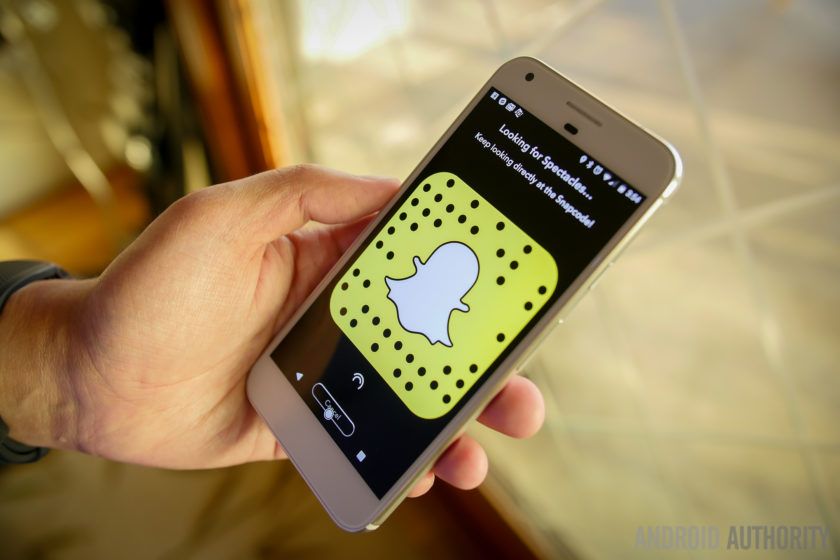Snapchat’s popularity comes from its disappearing messages, fun AR filters, and quick, casual communication style. Creating an app like Snapchat might seem challenging, but with the right approach and a clear understanding of what makes Snapchat unique, it’s entirely doable.
To replicate Snapchat’s success involves seeking more than just mimicking it; you must have a solid understanding of the target audience, incorporating useful functionalities and expertise to set your app apart.
For your mobile app development company, we have prepared an easy guide with actionable tips to help you develop your own app that could capture a similar vibe. Read on to learn this process to add your twist and ensure long-term success.
Building Your Own Snapchat Here
1. Define Your Concept
The process of mobile app development for Snapchat-like apps starts with understanding concepts. It involves having a solid understanding of the business model in which it works.
Likewise, what are the best features of this app, and what more can you add for a personal tweak? You are supposed to identify your target audience here with their preferences, behaviours, and pain points to bring out something that resonates with them.
2. Market Research
Analyse competitors like Snapchat, Instagram, and TikTok to understand their strengths and weaknesses. Look at user reviews and feedback to gain insights into what users love and what frustrates them. This analysis should also include identifying trends within the social media landscape, such as emerging technologies or changing user behaviours.
3. Plan Out Your Features
Create a list of core and optional features based on your goals.
Essential Features:
- User profiles and login: Allow users to register and manage their profiles.
- Self-Destructing Messages: For timed photo, video, and text messages.
- Photo/Video Capture: In-app camera functionality with editing tools and filters.
- Augmented Reality Filters: AR technology to create face filters and lenses.
- Stories Feature: A 24-hour availability feed for users’ content.
- Chat and Voice/Video Calls: For real-time interaction.
- Notifications: To alert users about new messages, friend requests, or streaks.
Optional Features:
- Location Sharing: Let users share their location with friends.
- Memories/Archive: Users can save snaps they want to keep.
- Discover/News Feed: Curated or user-generated content in a separate feed.
- Custom Avatars (Bitmoji Style): Let users personalise avatars.
- Friend Activity: Display friends’ recent activity and shared interests.
4: Choose Your Technology Stack
Selecting the right tech stack is a crucial decision because it impacts everything from app speed Choosing the right tools for the job is important. Snapchat’s features are real-time and visually demanding, so here’s a starting point for the technology:
- Frontend: React Native or Flutter for cross-platform apps or native options like Swift (iOS) and Kotlin (Android).
- Backend: Node.js, Python, or Ruby on Rails to handle real-time data and messaging.
- Augmented Reality (AR): Consider Google’s ARCore or Apple’s ARKit for platform-specific filters or Banuba and DeepAR for cross-platform.
- Data Storage: Firebase, AWS, or Google Cloud for secure, scalable storage.
- Database: Real-time databases like MongoDB or Firebase work well for Snap-style apps.
5. User-Friendly UX Design
Do you know what something persuades Snapchat users to keep coming? You would be surprised to see that it is because of a simple and easy-to-navigate UI/UX. It is a kind of secret tactic for you to make your app as much as you can to hit unprecedented heights of success.
Remember, an app with a clean and uncluttered interface allows users to focus on content rather than getting overwhelmed by buttons or icons. If you want to add gamification features like streaks, consider how to keep them subtle but noticeable, adding that extra bit of motivation without cluttering the core experience.
6. Start Building!
Now that you have a plan, it’s time to start coding! Begin with the essential features: user login and registration, in-app camera with filters, self-destructing messages, and Stories. Getting these core functions working smoothly will provide a solid base to build on and allow you to test the app’s essential interactions early on. When developing the camera and filters, make sure they’re fast and responsive since they’re the heart of the experience. Once the camera and messaging run well, you can add more advanced features like chat, video calling, and notifications. By focusing on one feature at a time, you’ll ensure each one works smoothly, avoiding the frustration of fixing everything at once if bugs arise.
7. Prioritise Privacy and Security
Apps like Snapchat are popular because they feel safe, so consider implementing end-to-end encryption for messages and other private content.
If you want to excel in this niche, there are several stringent security practices you can go for, like Two-factor authentication to add another layer of security.
This ensures that the app you create is secure and gives users peace of mind. Also, let the app user control their own privacy setting, like who can view their Stories, location, and other data.
8. Test the App Thoroughly
Testing is crucial to make sure your app runs smoothly. Get a mix of devices and operating systems for testing to ensure a consistent experience.
- Usability Testing: Make sure the app is easy and intuitive.
- Performance Testing: Photos and videos should load fast.
- Security Testing: Check for vulnerabilities in your encryption and data security.
- Bug Fixes and Feedback: Listen to early users’ feedback and address any issues.
9. Launch and Promote the App
Your app is ready for launch after everything has been tested and is working well. But before you dive into launch, it is necessary to keep in mind that app marketing is as important as building it.
This would be useful if not in the hands of target audiences; you can use a technique of app store optimisation that uses keywords and a compelling description to help users find it. Also, sharing it on your official social media pages and letting users know about the app’s unique features is beneficial.
Other things for marketing include reaching out to influencers and referral programmes to drive downloads in the early days. In the end, an effective marketing strategy can make a huge difference in how quickly it gains traction.
10. Keep Evolving
Even after launch, your work isn’t done. Keep listening to user feedback, and take note of common issues or feature requests. Users will appreciate seeing their feedback incorporated into updates, and staying responsive to their needs is key to maintaining a strong user base. Consider introducing new features periodically to keep the app fresh and engaging, but avoid overloading it. Instead, focus on small but meaningful improvements, like adding new filters, enhancing privacy options, or refining the interface. Continuous improvement will help keep users engaged and turn new downloads into a loyal user community.
How Much Will Snapchat Like App Cost You?
For an app like Snapchat, you might need a solid investment that can vary along with factors involved in the mobile app development process. This includes:
- Feature Set
- Design
- Size of Development Team
- Technology Stack
- Location
- Maintenance and Updates
- Marketing and Launch
So, right after considering these different factors, we can assume that the Snapchat-like app usually can cost around 100k to 500k dollars. However, this is just an estimated price; if you need a precise quote for your next project, we recommend you to an expert mobile app development company for this.
Nailed It?
Building an app like Snapchat is a challenge, but it’s also a chance to put your unique stamp on a proven idea. Remember, on these social sites, user experience is a paramount aspect that can either break or make your app. Avoiding MVP failures is crucial in this process; delivering a polished, well-functioning minimum viable product (MVP) can help ensure your app gains traction by meeting core user needs effectively right from the start.
You can pay extra attention to prioritising privacy and minor details to make your app product something people love to use. Hire a mobile app development company to get a well-executed product that satisfies users’ needs and yields substantial returns.





